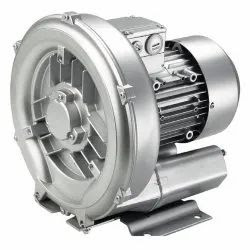Roots Blower how?
ROOTS blowers operate on the principle of positive displacement, where they use two counter-rotating lobes to move air or gas. Here’s a breakdown of how they work:
**1. Basic Operation
**a. Two-Lobe Design
- Structure: The blower features two rotors (lobes) that rotate in opposite directions within a casing.
- Function: As the lobes rotate, they trap and compress a fixed volume of air or gas between them and the casing.
**b. Air Movement
- Intake: Air enters the blower through an inlet port as the lobes rotate and create a void.
- Compression: The trapped air is then moved through the blower as the lobes continue to rotate, compressing the air between the lobes and the casing.
- Discharge: The compressed air exits through the outlet port.
**2. Key Components
**a. Lobes
- Role: The rotating lobes create the positive displacement effect, moving air or gas through the blower.
- Design: Typically, the lobes are precisely machined to ensure smooth rotation and efficient air movement.
**b. Casing
- Role: Houses the lobes and maintains their alignment.
- Design: Designed to withstand the pressures and forces generated during operation.
**c. Shafts
- Role: Connects the lobes to the driving mechanism.
- Design: Ensures that the lobes rotate in synchronization.
**d. Bearings
- Role: Support the rotating shafts and reduce friction.
- Design: High-quality bearings are essential for reliable operation and durability.
**3. Operation Cycle
**a. Intake Stroke
- Description: As the lobes rotate, they create a void that allows air to be drawn into the blower through the intake port.
**b. Compression Stroke
- Description: The lobes trap the air and compress it as they continue to rotate, moving it towards the outlet port.
**c. Discharge Stroke
- Description: The compressed air is expelled through the outlet port as the lobes continue their rotation.
**4. Advantages
**a. Consistent Flow
- Benefit: Provides a steady and consistent volume of air or gas, which is ideal for many industrial applications.
**b. High Efficiency
- Benefit: Delivers high performance with minimal energy consumption.
**c. Durability
- Benefit: Built to withstand demanding conditions and continuous operation.
**d. Low Maintenance
- Benefit: Requires less frequent maintenance compared to other types of blowers.
**5. Applications
**a. Pneumatic Conveying
- Use: Moving bulk materials through pipelines.
**b. Wastewater Treatment
- Use: Aerating tanks and treatment processes.
**c. Industrial Ventilation
- Use: Providing airflow for ventilation systems.
**d. Chemical Processing
- Use: Assisting in chemical reactions and blending.
**e. Aquaculture
- Use: Aerating fish tanks and ponds.
**6. Conclusion
ROOTS blowers are a reliable and efficient choice for many industrial applications, offering consistent performance and durability. Their positive displacement mechanism ensures a steady flow of air or gas, making them suitable for a variety of demanding environments. If you have more specific questions about ROOTS blowers or their applications, feel free to ask!
